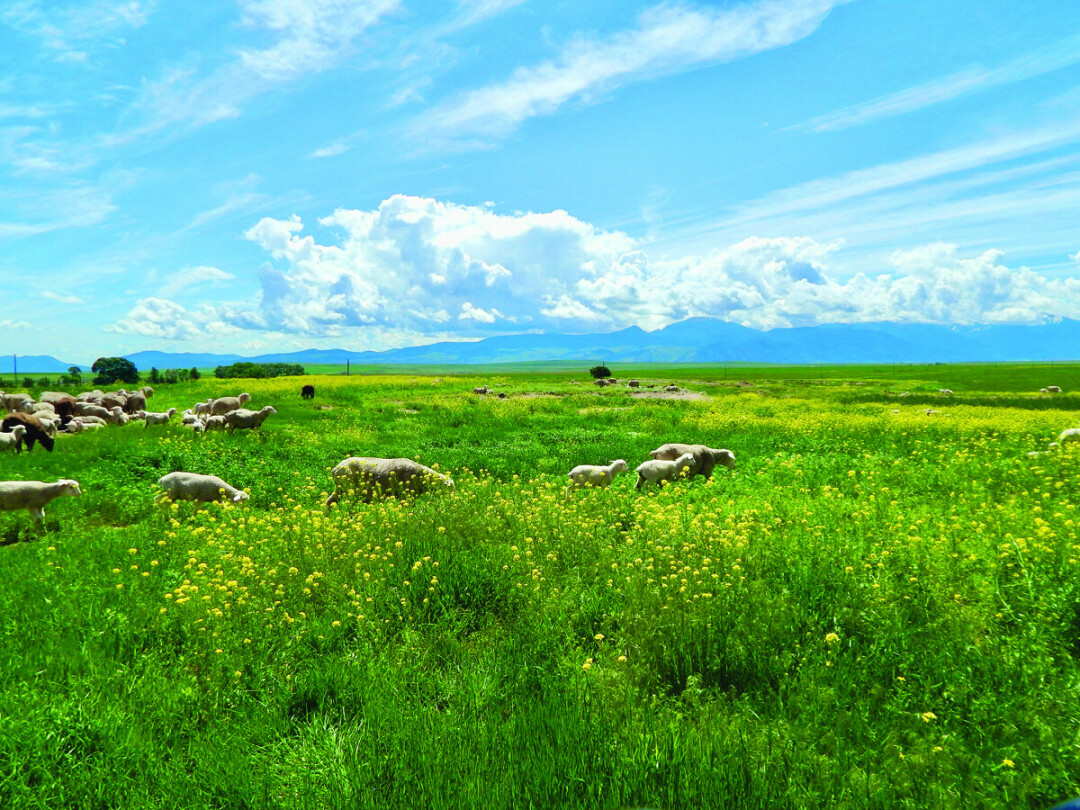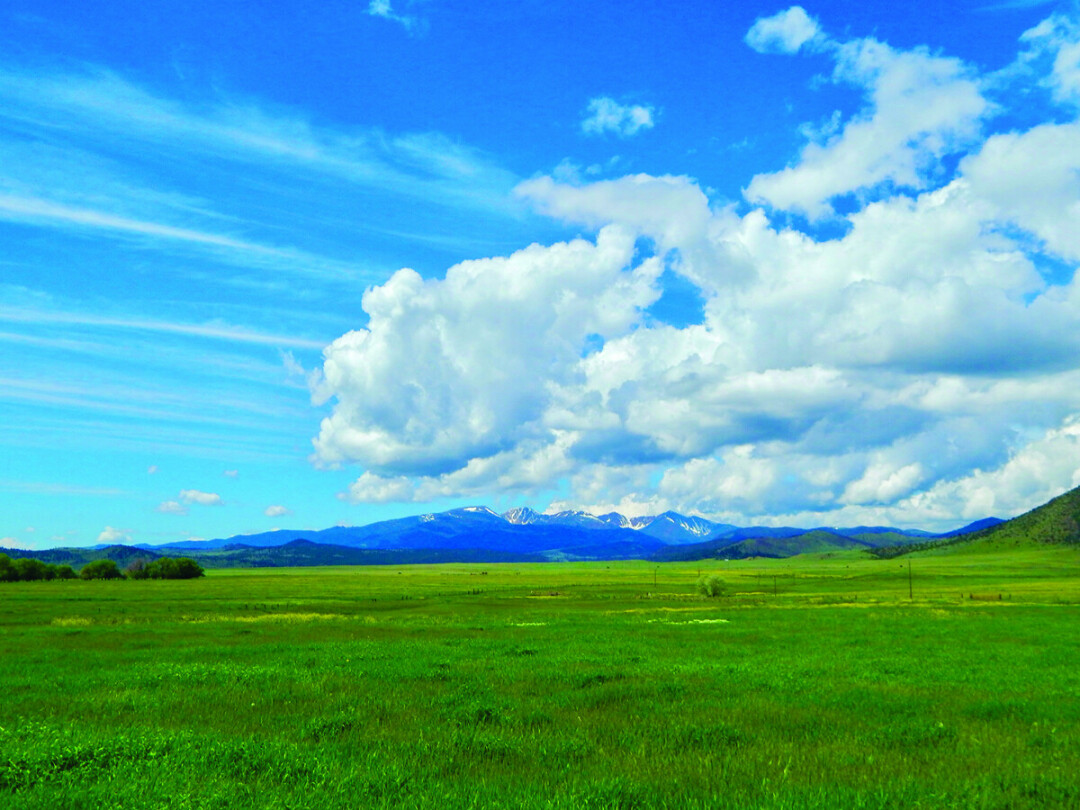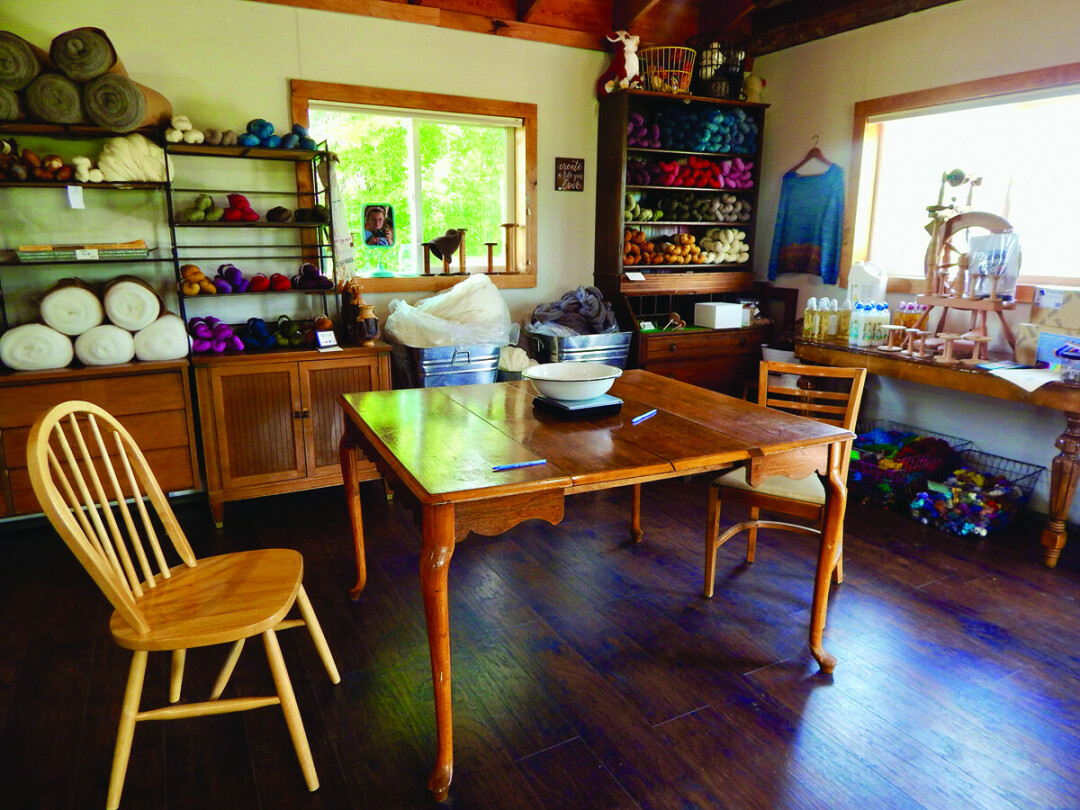The Love of a Rancher
Liz Bischoff | Friday Dec. 1st, 2023
The heartbeat of a Montana rancher can be heard when the whistling winds that chap uncovered skin finally die down, when the hail that dents rooftops and cracks glass finally settles, when the lambing ewes stop braying and bleating and start licking their young. Then, will you hear the Montana rancher’s heartbeat — a steady, hearty thump, thump, thump that warms thick coats.
A few days before Christmas, my daughters were playing at my feet in our warm home in Bozeman, Montana and I looked outside to see that the air stood still in -40 degree temperatures, and icicles had formed on the walls around our windows, freezing the power outlets. The cold was literally breaking the barriers. My husband’s truck wouldn’t start; his coworker saved his life by giving him a ride home.
I looked outside; even the wild horses that live in eyesight of my warm home had finally stood still. It seemed as though nothing moved in -40 degrees. The busy streets of Bozeman were bare, the particles in the air froze, the trucks refused to start, and the water was as motionless as a marble statue.
My thoughts dragged on over a steaming cup of coffee, and I thought about the population of cattle and sheep in this region — were they okay? With my two babies at my feet, warm but pink-cheeked nonetheless, I asked myself what measures did the heifers take to ensure their calves were okay? What measures does a rancher take to ensure they don’t get frostbitten way out in the field?
The answer must be simple — the rancher must love their livestock to withstand that bone-chilling cold and keep moving their body to feed, to herd, to water, despite the frozen air protesting. To confirm my prediction, I sought out Kami Noyes, a legend in the ranching community and a leader in Montana Fibershed, a grassroots, non-profit organization that supports Montana-based natural fiber and dye systems.
However, when I asked Kami how a rancher loves their ranch, and how that love is tested in the cold, frigid months of the Montana winter, I received an answer I didn’t expect.
Kami Noyes is a fifth generation rancher outside of Whitehall, Montana, about an hour’s drive outside of Bozeman. She manages her cattle and sheep ranch, as well as Ranching Traditions Fiber, her fiber and yarn brand. She utilizes her sister’s on-site barn, The Copper K Barn, a venue for weddings and celebrations of life, for the annual Copper K Fiber Festival. Kami and her family raise beef cattle and Targhee Rambouillet sheep on their “as far as the eye can see” ranch at the base of the Tobacco Root Mountains, using regenerative, zero-waste techniques. They remain loyal to traditional, proven-to-work agricultural practices while having modernized the ranch.
Her ranch is nestled in a beautiful part of southwestern Montana between Butte and Bozeman, in a town called Whitehall. Her great-great grandfather is originally from France, and came to the United States as an orphan at the age of 11. In the late 1870’s, he was one of the first ranchers to bring sheep to Montana from California and export cattle to Chicago. He purchased the Copper K Barn and land in Whitehall from the Parrott Silver and Copper Company. The barn was apparently never used to mine for gold because there was a scare that they would never find any. Today, this barn is used as an absolutely gorgeous wedding venue amid the Montana mountains.
Kami is a talented fiber artist with an eye for color, especially pink, despite her claim of never wearing pink. Who doesn’t adore hot pink yarn? Her commitment to using regenerative, age-old practices on her ranch, for the sake of being kind to the family land, was the first indication to me that she really loved what she did and who she did it for."
Kami’s family rotates pastures every year in order to let the land rest, and they use 100% of the sheared wool from their sheep for either yarn or fertilizer, among many other regenerative practices. They also ensure that their land can feed and water their cattle and sheep year-round so that they do not have to purchase feed elsewhere. These practices are mighty in securing the land for generations to come. The ranch is currently multi-generational with Kami’s dad, Kami and her husband Reid, and her daughter and son and his family living on the ranch.
I asked her, coming from five generations of ranchers, what she hopes to see for the coming five generations on this family land. I saw a heavy heart in her eyes when I asked this and in that second, I thought, again, of my girls and their future.
Try as we might, as moms, to plant trees, recycle water bottles, or use beeswax wrap instead of cellophane, with the heart of leaving our children the healthiest possible Earth within our control, we are up against giant corporations that refuse to carry our hearts in their hands. As moms, we painstakingly obsess over details of waste, renewal, and regeneration within our children’s childhood. How can I take this little drawing they made and use it for the paper mâché project they have to do in class? How can I use the water bottle for a paint project? Of course, these practices matter, but it can feel in vain when the biggest companies around you spill oil into the Yellowstone River, or a train derails, the train car crashes, and toxic fumes emit without any control.
Kami’s voice became smaller when she answered my question; she told me she wasn’t sure if the ranch would make it another five generations. Her unique version of heartache is that one day, subdivisions will break up her land and the ranch will be separated. Her hope is that she has taught her children to love this land as much as she does so that the land can live on with their family.
When asked about heartache on her ranch, I fully expected Kami to say “losing sheep to bad weather,” or “losing a lamb during lambing,” both of which she explained were very difficult situations to be in as a female rancher—but the real heartache on the ranch was the recent death of her guard dogs. Boo and Tally were always by her side and would have been at her feet for this interview, had they been alive. Boo and Tally made sure Kami made it to her chores and got home safely every night. They kept track of Kami with so much foresight and love that the shadows of Boo and Tally by Kami’s side are almost visible if you look hard enough. Kami’s new guard dog is a good boy, a Great Pyrenees that was lounging, rather lazily, under the table outside of her fiber studio, clearly accepting my daughter’s playful, toddler presence as she snapped shots of him with my camera.
I gathered my data, like a white-coated scientist, and thought about how Kami and I decided to define love. We talked about the heartache of losing dogs, the hope you feel for your children’s’ future, the pride you feel when a ewe successfully licks and nurses her lamb, caring for generations-old land with firm but loving hands, the sacrifice of not indulging in luxuries like vacationing because of dedication to your life’s work, the honeymoon-like love and inspiration you feel when you create a new color scheme and start new projects, the respect you gain when you hear your ancestors’ stories, the doubt when hardships arise, and so many other forms of this complicated feeling called love. I thought I might hear about how this rancher loved her sheep, simple as that, but what I learned was that it wasn’t quite that easy — is love ever that easy? What is love, if not an uphill fight that you willingly choose to engage in every single day? I learned that Kami’s entire heart beat around this land, and she allowed me to walk on it and take pictures of it, despite my ignorance of its magnitude in her heart.
Love, I learned, does not waiver when it is -40 degrees. It simply “puts more clothes on,” as Kami puts it. The Love Of A Rancher is seldom seen in the public eye. They see a hard worker with a bandit scarf around their face, protecting their skin. But under that bandit scarf is the tight lip of a rancher enduring the weather, ignoring the freezing sweat on their back so their family can eat warm stew with fresh beef and potatoes, their children can run on owned land, and their dog can find them after a long day out in the field. What about the flocks in -40 degrees? Oh, don’t worry about them — they love it! You will see sheep with full coats running, and the cattle piled together, cozy. And you will see a rancher, enduring the frigidity to make sure everyone is fed.
As Kami and I wrapped up the tour of her sheep’s flock, she asked me about my own daughters. Were they alike? Did they get along? Are they a lot like you, or are they like their dad? And in answering these questions about my children, which every mom loves to do, I understood that Kami’s heart truly belongs to her dad, her husband, her children, and her grandbaby. She loves her family and wanted to hear about my love for mine. The Love of a Montana Rancher’s heart beats for her family. When everything else stands still in -40 degrees, Kami’s heart flows steadily; she puts on more clothes, and she endures.
| Tweet |